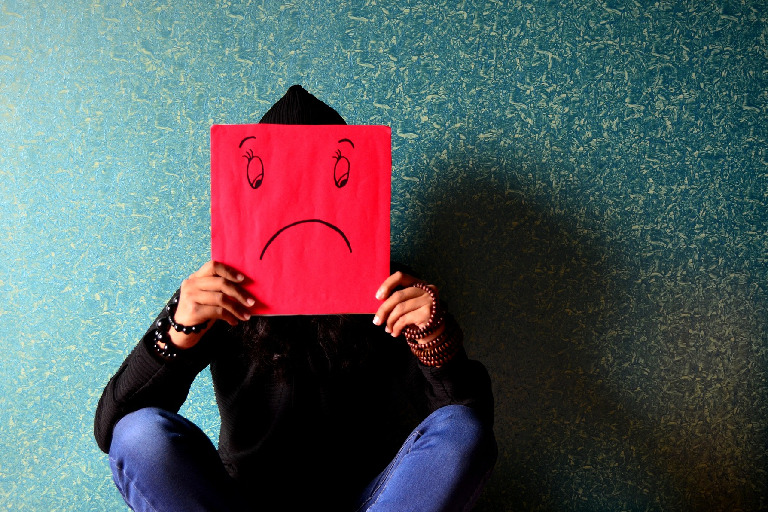
What is Anxiety?
November 04, 2019 | Anxiety, General
Anxiety is the sum of the sensations, feelings, and thoughts you experience when you detect a threat. In response to that threat, you start preparing to face the danger in the best way you can: you try to figure out if there’s anything you can do to prevent the threat and, if not, you try to think of ways to minimize the pain of it.
Example: “I have a job interview next week. I always get so nervous about them. I really want this job and failing at this interview could cost me this opportunity.”
We all experience anxiety sometimes.
Anxiety and you
Anxiety triggers a chain reaction that helps our body to meet the demands of the challenge. This may feel like tension in your muscles, such as on your neck and shoulders; pain in your stomach, problems with digestion; shaking, sweaty hands, heart beating fast; problems controlling your thoughts, feelings of dread, and problems sleeping, among others. These are all the result of your body doing what it knows will help you react quickly and get free, if a tiger were to come running at you. In response to such a threat, your brain sends signals to your muscles to punch back and run, stops spending energy on digestion so it can be used to run, and it makes you think hard about how you’re going to avoid the tiger’s path. The problem is that, in modern times, we’re not defending ourselves from tigers (… or that’s rarely the case here in the Western Hemisphere). The threats have changed, and now we worry about job interviews, having to resolve interpersonal conflict, etc.
Another possible problem is that, because the threats have changed, and because of the influence of culture, it seems like there’s not much we can do about these threats. Often, we don’t even know what exactly we believe the threat is, e.g. “I have to have everything in control or I become too anxious to function”; “I don’t feel confident talking to people”; “my mind goes blank when they ask me about myself.” These and other personal realities may cause functional anxiety to become chronic, so that it no longer serves you and, instead, makes your life more difficult.
Anxiety and Mental Health
Professionals have many ways of talking and summarizing different parts of the human experience. In the case of psychological health, people often talk about the DSM-5 to summarize what constitutes (or doesn’t) an anxiety disorder. There are many problems with taking the DSM-5 as the end-all in mental health, but talking about that would be enough for another post altogether.
We say someone experiences a mental health disorder when what they’re going through causes distress and or interrupts their ability to participate in the world. An anxiety disorder, then, is when someone’s experience of anxiety causes them distress and gets in the way of them living their life to its fullest. There are many types of anxiety disorders, and people can have more than one at the same time.
The Experience of Anxiety
Anxiety that doesn’t go away is anxiety that affects your life. It’s anxiety that, even more, gets in the way of your life. Suddenly, you can’t just forget about The Thing. People say, “stop worrying” but they never say how you’re supposed to do that.
Because of biology, fear overrides our ability to think logically. The result of that is that the things you know in your head don’t seem to do anything to make you feel better. So what do you do?
First, you need to learn ways to tell your body that you’re safe enough. That is, helping it recognize that, right now, you don’t have to focus on the tiger. Then, once your body’s responses to a threat have come down enough, your thinking brain can come back online. Once you have access to all of your brain again, you can use your awareness to manage your experience further. This all can make the intensity of anxiety to go down.
Learning to do this can take time. It involves practice and, many times, guidance. When I’m helping people with anxiety, I often spend a good chunk of time figuring out what strategies will work for them, in terms of telling their body that it can calm down for now. Everyone is different, and that applies in working with anxiety, as well. Only when we start recognizing their perceived threats and have a good idea about what works for the person, we can start talking about the rest. Then we can explore the content of the anxiety, how they experience it, and what they believe about themselves and the world for it. It’s with this process that we bring about change, and what I try to do with my clients.
I grew up speaking Spanish. English is my second language. When I communicate in English, I make mistakes. I've chosen to let the writing on my blog reflect the kind of mistakes I make when speaking, so that you have an idea of what it might feel like to talk to me. I trust the message is still clear but, if it's not, please don't hesitate to ask me for clarification.
The information provided on my blog is a mix of my personal thoughts, professional approach, and articles related to mental health. The purpose of sharing all of this is to communicate the models at the core of my practice, as well as to provide education. I hope this will help to minimize some of the power imbalances related to my profession. The articles on this blog should not be considered as professional advice for any one person or group of people. If you have any questions about the appropriateness of this content for you, please contact a qualified mental health professional.